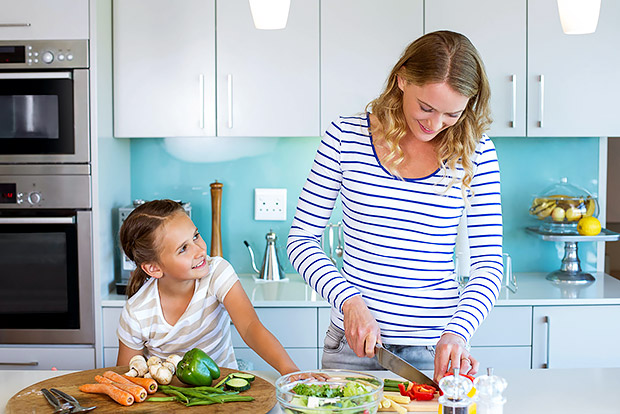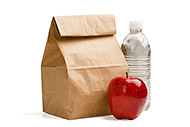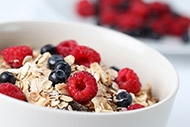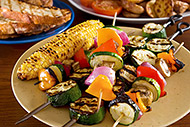
What are the Benefits of Teaching Children How to Cook?
Cooking healthy foods as a family can improve nutrition while providing quality family time. Cooking with children sparks an interest in healthy foods and can increase the willingness to sit down and share a meal as a family. Preparing food allows children to make a meaningful contribution to the family, which leads to a sense of accomplishment and can build self-confidence. The cooking skills your children develop will last into adulthood, giving them the tools they need to live healthier lifestyles.
Measuring and mixing are only one part of the cooking experience. Be sure to involve children in recipe reading to help them better understand the process of cooking food. Cooking can also teach lessons about science, family history, and food culture. You can focus on science education by exploring how foods cook and bake and the essential ingredients for creating these reactions. You can celebrate your family history and food culture by preparing recipes that your grandparents used to make, or study a country and prepare the national dish together.
When Should Children Start Cooking?
Children of all ages can be involved in the kitchen. Begin with basic tasks, and as children grow and build skills, continue to increase the responsibility while providing supervision as necessary. Children under five can scrub root vegetables, rinse greens in a colander, count or measure ingredients, stir, and sprinkle. Children ages 5 to 10 can learn to crack and separate eggs, operate a stand mixer, mash foods, and roll dough. When using kid-friendly kitchen tools, older children can grate cheese, peel vegetables, and begin chopping and slicing.
What’s the Best Way to Start Cooking as a Family?
Begin with simple foods that are easy to prepare and assign each person a task from the recipe. For example, a breakfast smoothie requires enough steps for each person to play a role in the preparation. Someone can measure the fruit and milk, another can place the ingredients in the blender, someone can operate the blender, and another person can pour the drink into serving glasses. Make a salad by assigning tasks like whisking the dressing, peeling and chopping vegetables, and tossing the vegetables together in the bowl. As your family becomes familiar with being in the kitchen together, you can progress to more advanced cooking.
Sources



 3 Healthy Lunches for Your Work Week
3 Healthy Lunches for Your Work Week
 5 Tips for Stretching Your Budget for Healthy Food
5 Tips for Stretching Your Budget for Healthy Food
 Best Ways to Reduce Added Sugar
Best Ways to Reduce Added Sugar
 Healthy Tips to Lighten Up Picnic Foods
Healthy Tips to Lighten Up Picnic Foods
 Do You Need to Drink Milk?
Do You Need to Drink Milk?
 Tips to Keep Track of Water Intake
Tips to Keep Track of Water Intake
 Butter vs. Margarine: What’s the Best Choice?
Butter vs. Margarine: What’s the Best Choice?
 7 Good Mood Foods
7 Good Mood Foods

 Pinterest
Pinterest RSS Feed
RSS Feed